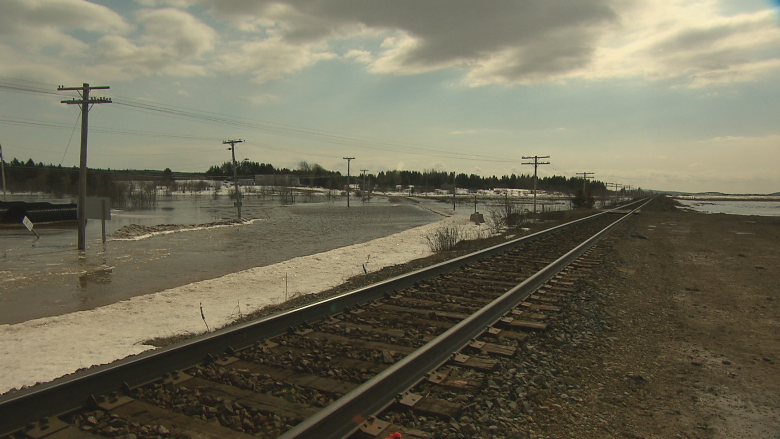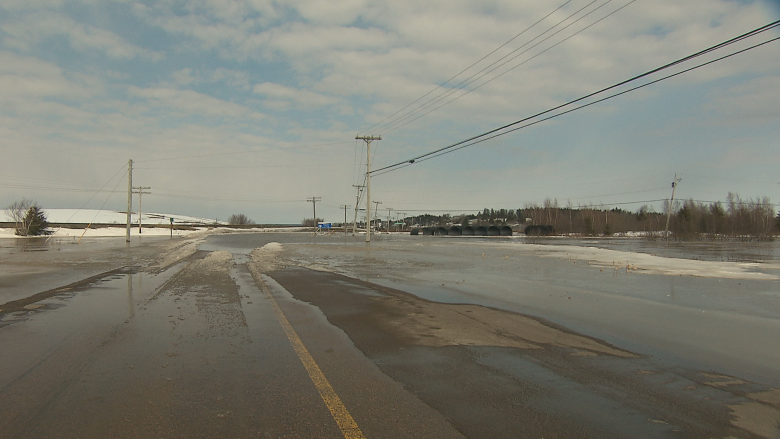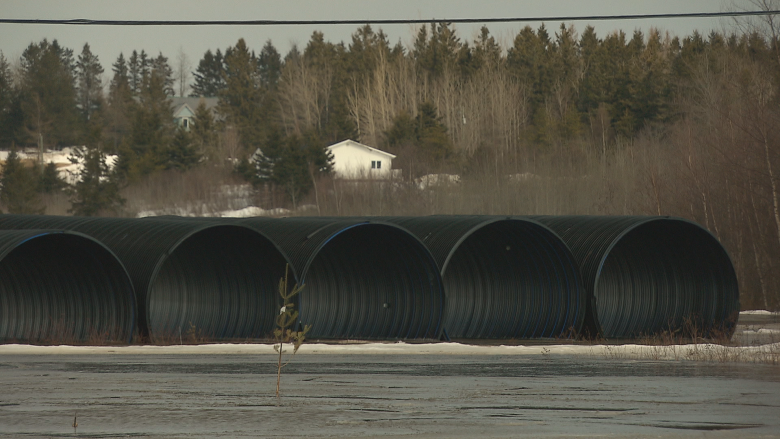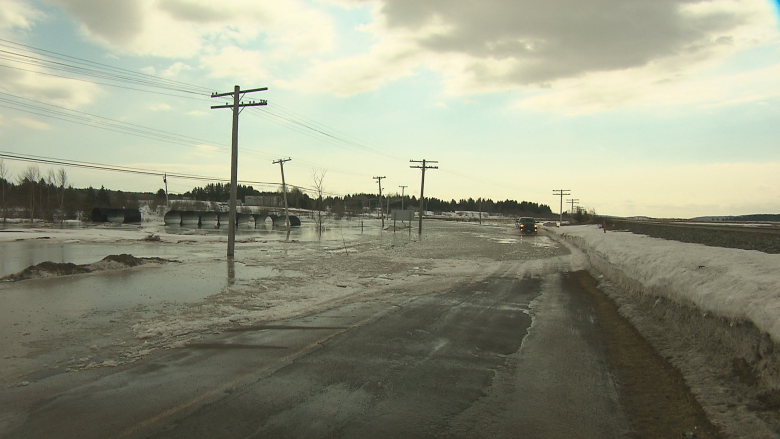No 'quick fixes' coming for flooded highway, province says
The provincial government says it's still trying to find a solution to the issue of flooding along a New Brunswick highway in the southeastern part of the province.
"The issues at play at this location are complex," said Jeff Hull, communications officer at the Department of Transportation and Infrastructure.
"Any solution to flooding on Route 106 must take into account the presence of CN's rail line, as well as the local tidal range."
The province closed a section of Route 106 again this week, at Anderson Mill Road in the local service district between Memramcook and Dorchester. This forced people travelling to or from Dorchester along the highway to take a considerable detour through Sackville.
In 2014 a clogged CN culvert caused a flood on Route 106 in Middleton for weeks, but this doesn't appear to be the cause in this case.
For one, a company spokesperson said on Tuesday that CN repaired a culvert in Breau Creek — just past Anderson Mill Road — in late 2016.
Jerome Bear, mayor of Dorchester and long–time village resident, explained the flooding occurs every time there are heavy rains and high tides, as this section of highway is lower than the nearby body of water.
Bear said the height of the tide relative to the road is the "biggest problem," so replacing the culverts — although he sees them as too small — won't do much to stop the flooding.
Currently, there are several culverts sitting on the side of the road in the affected area, which Bear said have been there since late last summer.
Bear and Michel Gaudet, mayor of Memramcook, said they didn't know the owner or the purpose of the culverts.
The Department of Transportation and Infrastructure told CBC News, the province co–owns the culverts with the rail company.
"Culvert components still in the area are from the repair work undertaken in 2016 and will soon be removed," the department said in a second statement.
No 'quick fixes'
The department said there is a 3,000 millimetre culvert with a downstream flap gate below the rail line and Route 106. The culvert was designed to alleviate flooding problems.
"The effects of climate change are making it increasingly challenging for our existing infrastructure," the department said. "That is something successive governments have seen."
The department went on to say that its employees have made regular visits to the site — most recently, Friday of last week.
"As mentioned the dynamics at play in the area are complex and any solution must carefully balance safety, the presence of the CN rail line, environmental factors and the local tidal range," the department said.
"There will be no quick fixes to these challenges."
Flooding is 'very inconvenient'
Bear said the road has flooded three or four times in the last year.
The flooding is "very inconvenient," given the number of people that work at the Dorchester Penitentiary, as well as those that live in Dorchester and commute to work in Greater Moncton, he said.
"It's a huge burden on a lot of people, because you're paying for that extra gas to go around it."
This section of the highway lies outside of Dorchester's limits, so the village can really only lobby the province over the issue and has done so for years, Bear said. In fact, there were talks between Dorchester and the current MLA's predecessor.
Ultimately, the village wants the province to raise the road and move it away from the rail line.
In response, Bear said, the province has told the village that it's looking at the issue.
Issue 'reflective' of climate change
Bradley Walters, a professor who teaches in the geography and environment department at Mount Allison University, said a combination of factors is causing an increase in the frequency and severity of floods on the coast [and inland], like this one.
"I think that this is probably generally reflective of climate change, and how that's manifesting is two–fold," said Walters. "You've got on the one hand, a slowly–rising sea, which means that the tidal inundation inland is getting a little more severe each year."
In other words, as sea levels rise, the tides are coming in further onto land.
"You're also seeing an increase in the frequency — and more the severity — of precipitation events," he said.
Meanwhile, winter temperatures are swinging suddenly, resulting in rapid melting, as parts of New Brunswick saw recently.
However, increasingly unpredictable weather events are only part of the problem, there's also the issue of infrastructure, which Walters said, was for climate of the past.
"So, we're going to see more of this kind of flooding, I expect, in the future and related problems."






